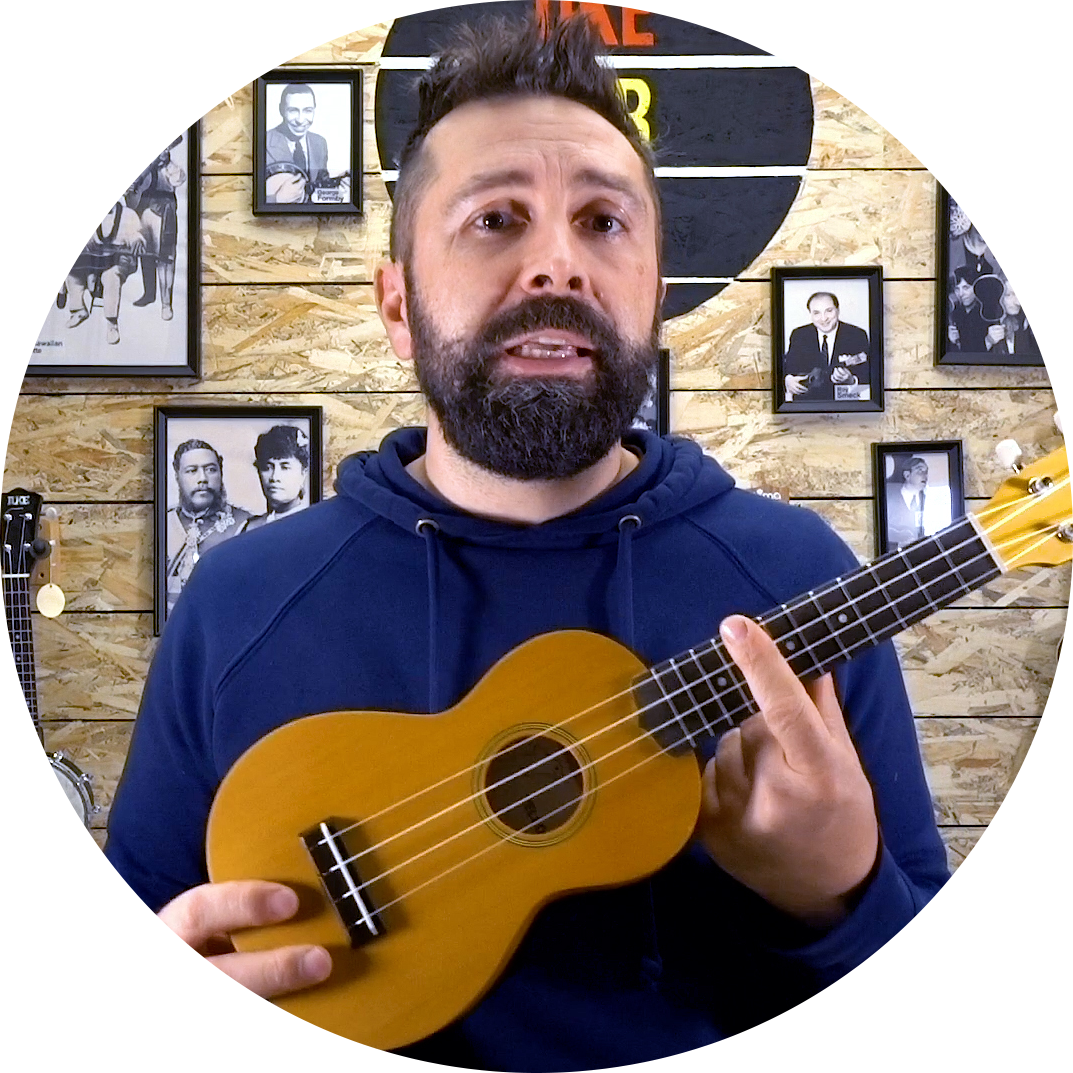One of the first questions every beginner asks is: “How should I hold it? Do I need a strap?” The answer might surprise you: the ukulele is so light and well-balanced that, with the right technique, it can hold itself in place without any support. It’s designed to become an extension of your body.

The 3 Steps to a Perfect Playing Posture
Mastering your posture isn’t a small detail – it’s the secret to keeping your left hand free and agile on the fretboard. Here’s how:
1. The Forearm Hug
If you’re right-handed, extend your right arm and place the widest part of the body over your forearm. “Cradle” it gently, applying light pressure at about bridge height. This will keep the instrument steady against your body.
2. Bring It to Your Chest
Draw the ukulele close to your chest. Your right arm stabilises it, while your left hand is free to create chords and melodies. The key is a grip that’s stable yet relaxed.
3. Lift the Headstock
Tilt the neck slightly upwards, aiming the headstock at “ten o’clock” or “eleven o’clock.” This improves balance and makes your left wrist position much more comfortable.
When a Strap Is a Great Idea
There are times when a strap isn’t just “okay” – it’s actually recommended:
- If you play fingerstyle and want more stability while your right hand focuses on the strings.
- For children who may have shorter arms or smaller hands.
- If you simply can’t find a comfortable, stable posture without support.
In these cases, an ukulele strap and a strap button can make all the difference. They allow you to play without thinking about the weight of the instrument, while still keeping a natural posture.
Try it: sit comfortably, adjust the strap to your height, and start playing. You’ll notice your left hand moves faster and with more precision.
The ukulele isn’t just an instrument – it’s a partner. And a partner should always be in the best position to shine.


Comments (0)